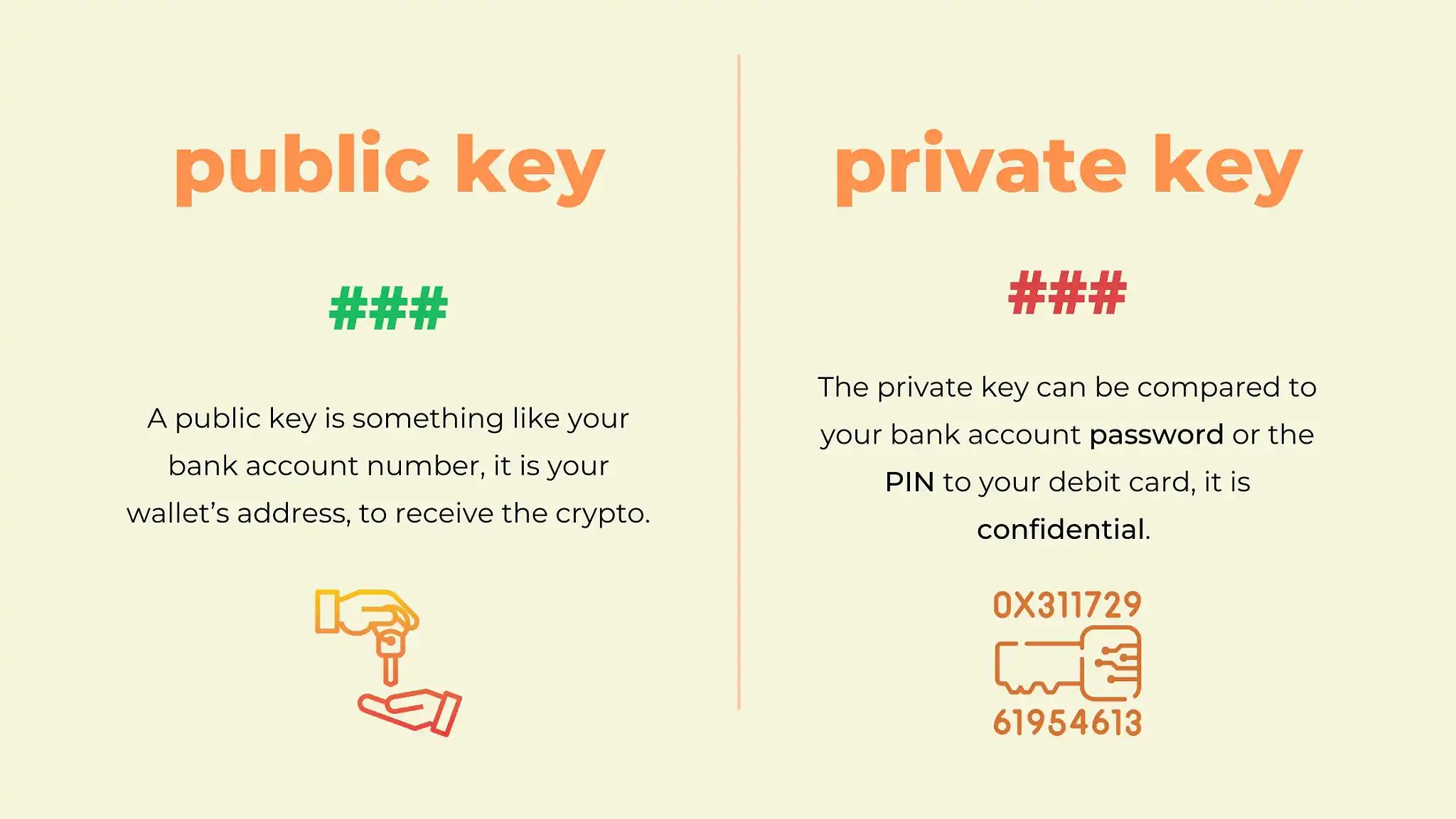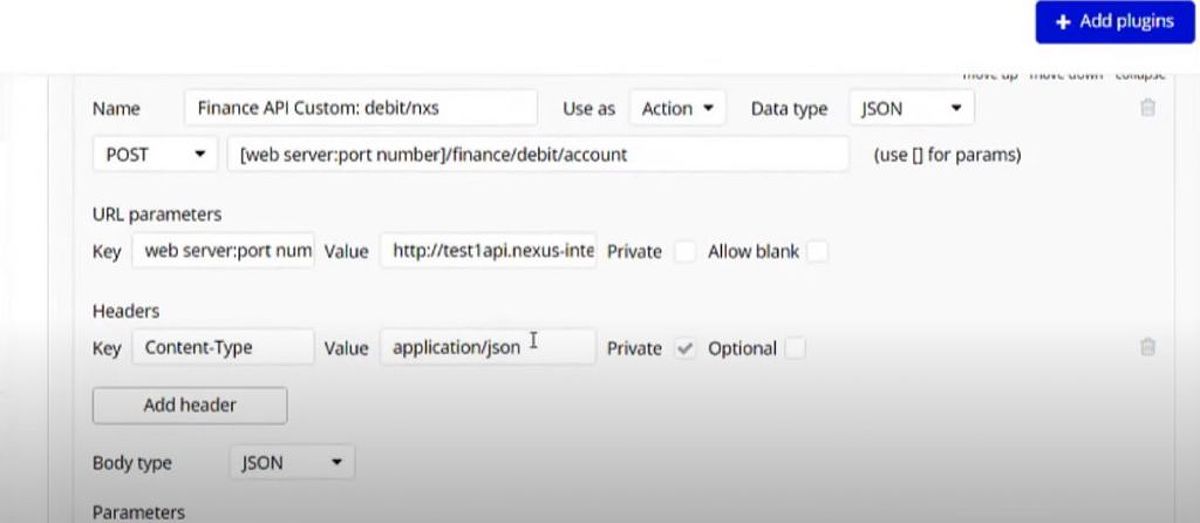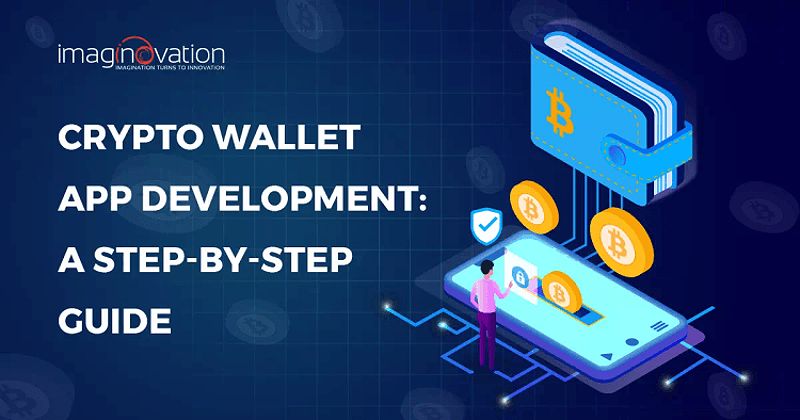In the ever-evolving world of cryptocurrency, the demand for secure and user-friendly crypto wallet applications has skyrocketed. As an aspiring developer, you have a unique opportunity to capitalize on this growing trend by coding your own crypto wallet app. This comprehensive guide will equip you with the knowledge and strategies to bring your crypto wallet vision to life, ensuring it prioritizes both robust security features and a seamless user experience.
Understanding the Foundations: Blockchain and Crypto Wallets
At the core of any crypto wallet lies the revolutionary blockchain technology. This decentralized, distributed ledger system is responsible for recording and verifying all cryptocurrency transactions, providing the backbone for secure and transparent movement of digital assets. As a crypto wallet developer, it’s crucial to have a solid understanding of how blockchain works and how it enables the functionality of your application.
 Blockchain and Crypto Wallets
Blockchain and Crypto Wallets
Blockchain technology operates by creating a chain of interconnected data blocks, each containing a record of multiple transactions. This chain is secured through complex cryptographic principles, making it virtually impossible to tamper with or falsify the information stored within. Crypto wallets, in turn, serve as the interface for users to interact with this blockchain ecosystem, allowing them to securely store, send, and receive their digital currencies.
Understanding the fundamental concepts of public and private keys, wallet addresses, and transaction processing is essential for designing a crypto wallet app that seamlessly integrates with the blockchain network. By grasping these core principles, you’ll be better equipped to make informed decisions throughout the development process.
Choosing the Right Tools for the Job: Development Frameworks and Languages
When it comes to building a crypto wallet app, the selection of development frameworks and programming languages plays a pivotal role in determining the success of your project. While there are several options available, some of the most popular choices include React Native, Flutter, and Ionic for cross-platform mobile app development, and languages like JavaScript, Python, and Java for backend implementation.
 Need for Crypto Wallet App Development
Need for Crypto Wallet App Development
Each framework and language brings its own set of advantages and considerations. React Native, for instance, offers a component-based architecture and a rich ecosystem of libraries, making it a compelling choice for building feature-rich and visually appealing crypto wallet apps. Flutter, on the other hand, provides a robust set of tools and seamless integration with the Dart programming language, allowing for efficient and scalable development. Ionic, with its web-based approach, can be a viable option for developers seeking to leverage existing web development skills.
When selecting the right tools, it’s essential to consider factors such as scalability, security, and ease of integration with blockchain APIs. By carefully weighing these factors, you can ensure that your crypto wallet app is built on a solid foundation, ready to withstand the demands of a rapidly evolving cryptocurrency market.
Building the Core Functionality: Key Features and Security Considerations
At the heart of a successful crypto wallet app lies its core functionality, a blend of essential features and robust security measures. As you begin to code your crypto wallet, focus on incorporating the following key elements:
Multi-Currency Support
Provide your users with the ability to manage multiple cryptocurrencies within a single wallet, catering to the diverse investment portfolios of modern crypto enthusiasts. This feature not only enhances the overall user experience but also future-proofs your app, allowing it to adapt to the ever-expanding cryptocurrency landscape. Transaction History
Offer your users a detailed and chronological record of all their cryptocurrency transactions, including the ability to view the history of each individual digital asset. This feature not only helps users track their financial activity but also serves as a valuable tool for tax reporting and financial planning. QR Code Scanning
Integrate a seamless QR code scanning functionality, enabling users to effortlessly send and receive cryptocurrencies by simply scanning the recipient’s wallet address. This feature not only enhances the user experience but also helps to minimize the risk of manual entry errors. Two-Factor Authentication
Prioritize the security of your crypto wallet app by implementing robust two-factor authentication measures, such as fingerprint recognition, facial ID, or SMS-based verification. This added layer of security helps to protect user accounts and safeguard their digital assets from unauthorized access. Offline Storage
Provide your users with the option to store their private keys in a secure, offline environment, commonly known as a “cold wallet.” This feature offers an additional layer of protection against potential cyber threats, ensuring the long-term safety of their cryptocurrency holdings.
 Features of Crypto Wallet App
Features of Crypto Wallet App
By carefully integrating these core features and security measures, you’ll be well on your way to building a crypto wallet app that not only meets the needs of your users but also sets a new standard for secure and user-friendly cryptocurrency management.
Integrating with the Blockchain: APIs and SDKs
To bring your crypto wallet app to life, you’ll need to establish a seamless integration with the underlying blockchain network. This is where the use of blockchain APIs and SDKs (Software Development Kits) comes into play, enabling your application to communicate with the blockchain and perform essential functions like sending, receiving, and tracking cryptocurrency transactions.
 Using API for No-Code Blockchain
Using API for No-Code Blockchain
Some of the most popular blockchain APIs include the Coinbase API, Binance API, and Ethereum API, each offering a unique set of capabilities and features. These APIs provide a standardized way for your crypto wallet app to interact with the blockchain, abstracting away the complexities of the underlying technology and allowing you to focus on building a robust and user-friendly application.
In addition to APIs, you can also leverage SDKs to streamline the integration process and gain access to pre-built functionalities. These development kits often include libraries, tools, and examples that can significantly reduce the time and effort required to integrate your crypto wallet app with the blockchain.
By seamlessly integrating your app with the blockchain, you’ll be able to provide your users with a seamless and secure experience, where they can effortlessly manage their cryptocurrency holdings without having to navigate the intricacies of the underlying technology.
Testing and Deployment: Ensuring a Smooth User Experience
As you near the final stages of your crypto wallet app development, it’s crucial to focus on thorough testing and deployment strategies to ensure a smooth and reliable user experience.
Begin by implementing a comprehensive testing regimen, including unit tests, integration tests, and user acceptance tests. This will help you identify and address any potential bugs or vulnerabilities within your application, ultimately improving the overall quality and stability of your crypto wallet.
Additionally, invest time in debugging techniques to quickly identify and resolve any issues that may arise during the testing or deployment phase. Leverage the wealth of debugging tools and resources available, such as logging frameworks, error reporting services, and remote debugging solutions.
When it comes to deployment, consider a multi-pronged approach, offering your crypto wallet app through various channels, such as app stores, web platforms, and even decentralized platforms. This diversified distribution strategy will help to maximize the reach and accessibility of your application, catering to the diverse preferences and needs of your target audience.
Remember, the success of your crypto wallet app ultimately depends on its ability to provide a seamless and secure user experience. By prioritizing testing, debugging, and deployment strategies, you’ll be well-positioned to deliver a crypto wallet that not only meets the needs of your users but also stands out in the rapidly evolving cryptocurrency landscape.
FAQ (Optional)
Q: What are the legal considerations for building a crypto wallet app? A: When developing a crypto wallet app, it’s essential to be aware of the evolving regulatory landscape surrounding cryptocurrencies. Depending on your target market, you may need to comply with KYC (Know Your Customer) and AML (Anti-Money Laundering) requirements, as well as obtain the necessary licenses or permissions to operate a crypto-related business. It’s recommended to consult with legal experts or industry professionals to ensure your app aligns with the latest regulations and guidelines.
Q: How can I ensure the security of my users’ private keys? A: Protecting the security of your users’ private keys is of paramount importance when building a crypto wallet app. Implement robust encryption techniques, such as AES or RSA, to safeguard the storage of these sensitive digital assets. Additionally, consider offering hardware wallet integration or the option for users to store their private keys in a secure, offline environment. Regularly audit your app’s security measures and stay up-to-date with the latest best practices to ensure the long-term protection of your users’ cryptocurrency holdings.
Conclusion
In the rapidly evolving world of cryptocurrency, the demand for secure and user-friendly crypto wallet applications has never been higher. By understanding the foundations of blockchain technology, choosing the right development tools, and incorporating essential features with a focus on security, you can create a crypto wallet app that sets a new standard in the industry.
As you embark on your crypto wallet development journey, remember to stay adaptable and vigilant, as the cryptocurrency landscape continues to evolve at a rapid pace. By keeping a pulse on the latest trends, security best practices, and user preferences, you can ensure that your crypto wallet app remains relevant and competitive, poised to meet the demands of the crypto-savvy user base.
So, what are you waiting for? Unleash your coding prowess and create a crypto wallet app that not only secures your users’ digital assets but also empowers them to navigate the exciting world of cryptocurrencies with confidence and ease. The future of decentralized finance is in your hands!
















 Bitcoin
Bitcoin  Ethereum
Ethereum  Tether
Tether  XRP
XRP  Solana
Solana  USDC
USDC  Dogecoin
Dogecoin  Cardano
Cardano  TRON
TRON